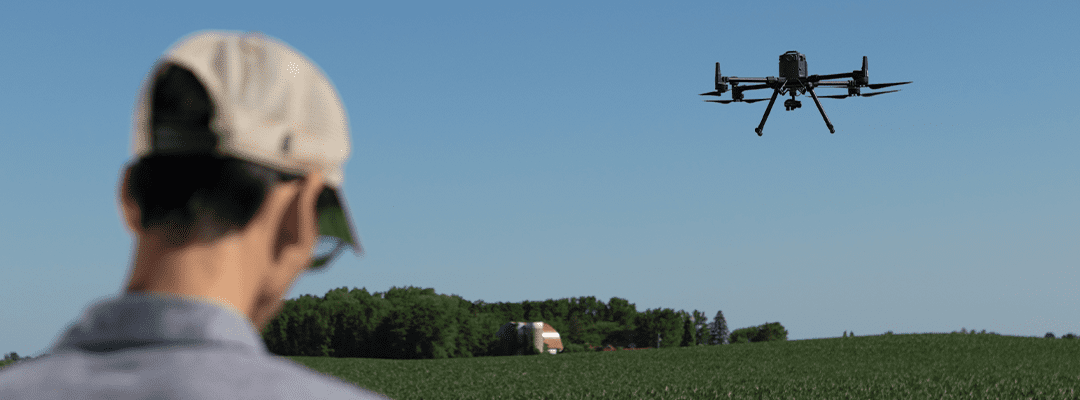For agronomic leaders seeking plant-level measurements, capturing data can be done in a wide range of different manners. From manual methods to aerial imagery via drone systems or satellites, each method offers pros and cons to accommodate the unique goals and needs of different operations.
When deciding which data collection method is best for you, some factors to consider include:
- Operation size; How many plots or total acreage?
- Data type: What information are you seeking, e.g., plant counts, identifying stress, or understanding abiotic factors?
- Resources: How much time, budget, and labor do you have available?
These are the primary differentiating factors to think about when deciding whether you plan to use satellite imagery, drones and sensors, or manual scouting to get the data you need. Boots-on-the-ground scouting continues to be a prominent option for capturing data in the field, but there are some significant cons compared to more technical-forward solutions. With labor and time constraints, as well as risk of objectivity, it can add complexity to your data collection process. This leaves drones and satellites – but how do you choose between those two options?
Oftentimes, it comes down to how precise and detailed you want your imagery and data. When looking for this more detailed look into your fields or plots, ag drone systems are the way to go. The high-resolution imagery captured by these drone sensors provides an even clearer picture into crop performance and health. And even if you don’t want to or don’t have the ability to collect data internally, there are agricultural drone services – or pilots for hire – available to ensure you are still getting the insights you need.
What do you Need to Prepare Beforehand?
Regardless of the data collection method you choose, pre-collection planning can be one of the most important parts of the process. Whether walking fields or relying on aerial imagery, laying the groundwork for what you are expecting to get out of your data capture mission. Some questions to start with include:
- What questions are you trying to answer?
- What data are you looking to uncover?
- What are some of your biggest concerns or problem areas?
These questions set the base of what method is best, the type of equipment that will be flown, when it will be flown, and can help guide to more specific areas if needed. With drone systems especially, going through your pre-flight checklist is vital in efficient and effective data capture. Setting guidelines for your flight before takeoff (regardless of who is flying) sets up for a more successful mission.
The Pros and Cons of Drone Fleet Management
Why wouldn’t you just own and fly your own drone systems? Isn’t that easier for you to get the data you need, when you need it?
Well, not necessarily.
While aerial imagery is more efficient than manual methods and owning your own equipment can sometimes add an elevated sense of accessibility – it isn’t always for everyone. There are numerous perks of owning and operating your own equipment, but there are also some challenges.
This runs parallel to the buy vs. build debate that so many IT teams undergo. After all, building your own internal drone fleet means that you own the equipment. You can determine who runs what missions and when. It means you can also capitalize the costs, which can be beneficial to the bottom line (even if the original investment may be pricey).
However, owning and flying your own equipment can come with its own set of responsibilities and demands that aren’t suitable for everyone. When you plan to own and fly your own system commercially, one of the most important steps is to get Part 107 certified to ensure you know how, when, and where to fly your drones. And stemming from that, you need to be aware of all the rules and regulations of UAV operation in the area you are planning to fly to avoid violations or dangerous situations. This may require extra staff and processes to manage the drone fleet, and pilots, effectively.
It’s also to consider what it takes to manage a fleet of drones. Like any other piece of equipment or machinery, there is going to be necessary maintenance, repairs or replacements, and newer products coming to market.
Looking at Agricultural Drone Services Options
On the other hand, the “buy” option – or agricultural drone services – can be appealing. This often means a lower upfront investment since the equipment isn’t required, and it can require less staff (no need to have a team of pilots!).
And, in an industry like agriculture – where we know the only constant is change, it can helpful to hire a drone pilot on demand, or when in a pinch.
When hiring these external agricultural drone services, these teams come trained and prepared with the latest and best technology needed to get the insights into your fields or plots that you’re looking for. Sentera’s Flight Services is one example of agricultural drone services that capture the data you need, when you need it.
Capturing aerial imagery is only one step of the data collection process. With a hired team, you can rely on them to take the data and process it how you wish so that you can get the data you require. This means less time required to mine through the data and opens up opportunities to spend this time on data analysis to validate outcomes. This can be extremely appealing to teams that manage multiple locations or have a high number of plots or acres they need to collect data points on throughout the entire season.
However, agricultural drone services can sometimes be more costly – depending on how often the flights occur and where they are located, as well as the required equipment. However, once you start to evaluate the total cost of ownership for a drone fleet, the costs may not be as different as initially thought.
So, Agricultural Drone Services or Drone Fleet Management?
Even with these considerations in place, the biggest factor on whether hiring external agricultural drone services or managing an internal drone fleet? Your goals and your needs. Like most things in agriculture, the true answer is it depends.
Considering which one works best for you requires an understanding of what you’re hoping to accomplish. And, for some companies, it’s a balance of both – using an internal drone fleet and pilots to capture some data; but requiring agricultural drone services to capture more complex data or to use the latest technology.
Whether for companies that are flying thousands of flights over plots and fields each year, or for researchers dedicated to a set number of plots and flights, finding the best solution may require a deeper understanding outside of what the drone can capture and what that means for the data that will be available.
After all, the goal is to leverage technology so you can better allocate time and resources to what truly matters: validating outcomes and powering critical decisions.


